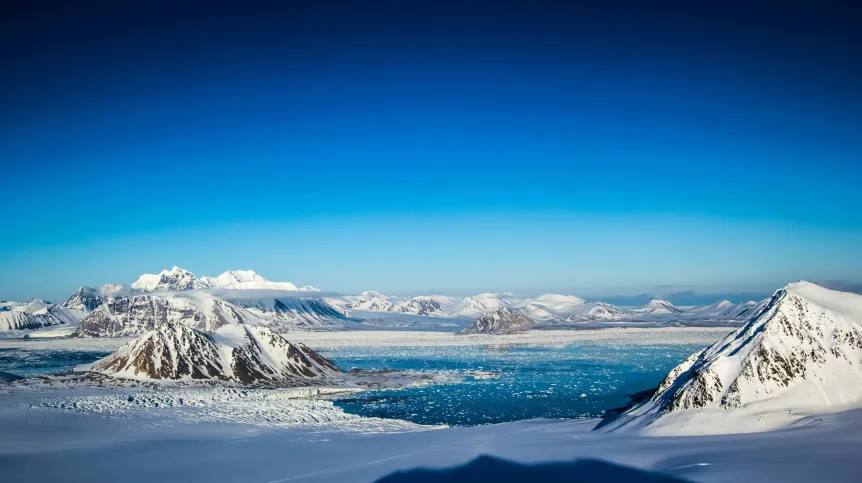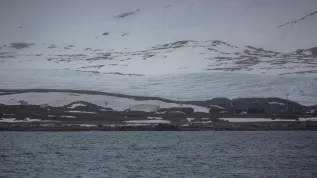
The condition of mountain glaciers in the European High Arctic is generally bad. It is particularly disastrous in many places in Svalbard/Spitsbergen and the Russian Novaya Zemlya, many of them may melt completely within about 30 years, Dr. Jakub Małecki from the Adam Mickiewicz University says after analysing data on several hundred glaciers.
There is a place in Europe, where both record warming and glacier growth are recorded at the same time. Despite the highest temperature increase in the world and an increasing rate of ice melting, there are still small glaciers in Arctic Europe that resist climate warming, and even grow, says Dr. Małecki.
He presented his conclusions from the study of small, and thus the most sensitive and delicate glaciers in Arctic Europe - the world region with the fastest temperature increase - in the journal of the European Geosciences Union, The Cryosphere.
Explaining his research, Dr. Małecki recalls the results of previous studies, according to which the European High Arctic (Barents Sea and surrounding archipelagos) is an area where the air temperature increases at the fastest rate in the world (in some places even by 1-2 degrees Celsius in a decade). The Barents Sea undergoes 'Atlantification', which means that it is turning from polar to moderate. This is manifested by a rapid water temperature increase, winter sea ice retreat and changes in ecosystems.
The archipelagos of the Arctic Europe include Svalbard (Norway), Novaya Zemlya (Russia) and Franz Josef Land (Russia). All three groups of islands are covered with tens of thousands of square kilometres of ice with a thickness reaching several hundred meters.
Between 2011-2017, Dr. Małecki analysed the behaviour of several hundred small mountain glaciers around the Barents Sea. The glaciologist said that mountain glaciers are very sensitive to climate change, because they are relatively small and thin and have a relatively low vertical extension (the altitude difference between the lower and upper edges). The evolution of mountain glaciers is primarily controlled by the climate, thanks to which their observations can also indirectly provide information about its state.
During the study period, most of the analysed glaciers were losing mass quickly. Małecki said that 'each square meter of the studied glaciers in Svalbard became 0.58 meters +thinner+ every year, losing 510 kg of mass, by over a meter and 930 kg +thinner+ in Novaya Zemlya and 0.25 meters and 230 kg +thinner+ in Franz Josef Land'.
Comparison of these values with previously published studies shows that small glaciers melt at a much faster rate than large glaciers, the researcher concludes.
Małecki said: “The biggest ice losses were observed along the west coast of Spitsbergen (the largest island in Svalbard) and in the southern/central part of Novaya Zemlya. The local mountain glaciers typically lost 3-4 meters of their thickness a year at their lower edges. Worse still, thickness losses were also recorded in their highest parts, in zones where snow should accumulate year after year. This probably means that many glaciers will sooner or later melt completely, even if climate warming would stop tomorrow. Some groups of the studied glaciers may disappear from the map around the middle of the 21st century, in about 3 decades, others in 50-100 years.”
According to Małecki, the biggest surprise were the northern edges of Svalbard, where small glaciers accumulated more mass than they lost and, as a result, grew.
He said: “This surprise is even greater considering the drastic climate warming in this region and previous glaciological research, which generally documented the quick losses of mass of small glaciers of Svalbard. The cause of the Anomalies in northern Spitsbergen is unclear for now, but paradoxically it may be related to warming. The hypothesis has been put that it may be related to the disappearance of sea ice north of Spitsbergen, which uncovers open water, increases its evaporation water and, perhaps, local snowfall.
“However, there is no reason to hope that a similar mechanism will protect the European Arctic ice in the future. Practice shows that such anomalies are relatively short-lived and spatially limited.
“In general, the condition of mountain glaciers in the European High Arctic is very bad. After thousands of years, the lives of many of them will end in the coming several decades', he concludes.
He added that an exception from this general trend is related to the positive anomaly of northern Spitsbergen.
“Arctic ice caps (ice domes with diameters reaching hundreds of kilometres), which are much larger than mountain glaciers, have greater capabilities of accumulating winter snow, thanks to which some of them remain in a relative balance with the current climate, as indicated by previous scientific work. This study is the first to document the condition of small and delicate mountain glaciers, at least in the European part of the Arctic. The presented results also illustrate how complicated, non-obvious, surprising and varied the effects of climate change may be,” he said.
Dr. Małecki is also the author of the blog GlacjoBLOGia, co -author of the book Beginning of the end? Conversations about ice and the climate change and an editor of the website Nauka o Klimacie (Climate Science).
PAP - Science in Poland
zan/ ekr/ kap/
tr. RL













